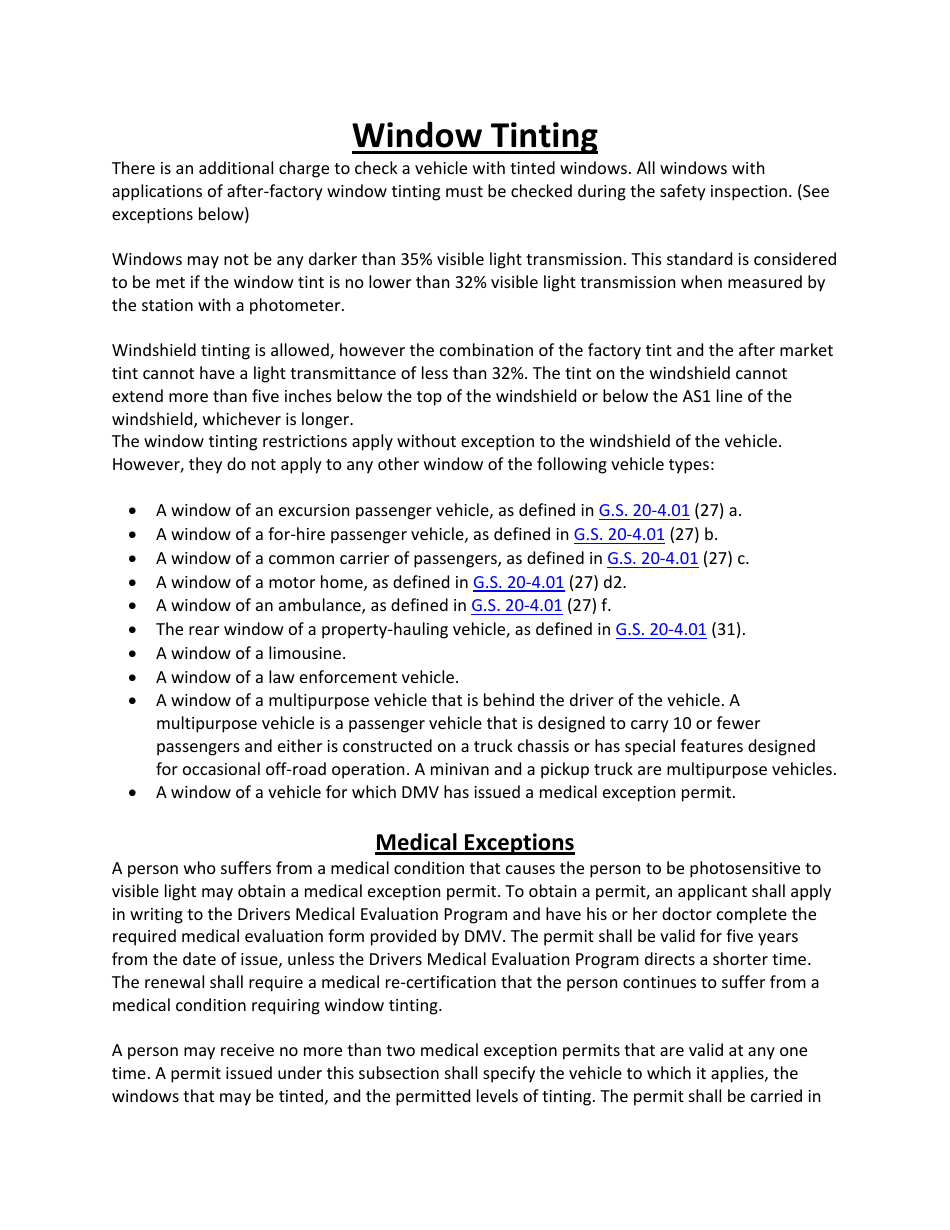
- TINTED WINDOW LAWS IN NC PROFESSIONAL
- TINTED WINDOW LAWS IN NC FREE
- TINTED WINDOW LAWS IN NC WINDOWS
Typically, there are a few reactions that you can expect, these include receiving: If you have or want after-market tinted windows, you must review how the law applies to your specific window film, as punishment varies. The official legal tint percentage in North Carolina is 35%, however, tint reflection can be no more than 20%. Violations of the conditions of the certificate can result in a 200-dollar fine.

Medical exemptions must pass through the medical review board and last up to 5 years if granted. After obtaining a medical exemption, you must display a sticker in the bottom corner of the left side of the rear window.You then return to the DMV for approval to qualify for a medical exemption.The form must be filled out by a physician.Must obtain a form from the department of motor vehicles (DMV) website.To obtain a medical exemption, the following must be done: The medical exemption allows the applicant to be eligible to have a maximum tinting VLT of 70% to the windshields. You might wonder, “What is the darkest legal tint in North Carolina?” The answer is that the darkest tint allowed is only for medical exemptions. This testing of after-market visual light transmission reduction film costs 10 dollars to the state inspection fee. In the yearly safety inspections of vehicles, the inspection stations use an approved tint meter to measure the visible light transmission. There is a 3% variance allowed from window to window.ĭifferent jurisdictions may have alternate interpretations of the law. You must have two side mirrors if you have a rear window tint.įilm manufacturers are not required to be certified in North Carolina.
TINTED WINDOW LAWS IN NC WINDOWS
Tint colors you cannot have applied to your windows in North Carolina are: NC laws window tint | Nuances and Other Tinting Rules This rule applies to both Passenger vehicles such as Sedans, or Multipurpose vehicles such as SUVs, Vans, etc. Front side and back side windows cannot have a reflection of more than 20%. Window Tint Reflection Rules in NC for Passenger and Multipurpose Vehicles If you have an extended commute investing in the new ceramic, nanotechnology in transparent shielding may be of value to you. Transparent film is virtually invisible but does decrease ultraviolet exposure by up to 99% and the sun’s heat by 43%. Reduction of ultraviolet light exposure through the use of a transparent film on the windshield is allowed.
TINTED WINDOW LAWS IN NC FREE

Tint Darkness Law in North Carolina for Passenger Vehicles Violating the federal laws by manufacturers will result in a 1,000-dollar fine for each instance related to the film, glazing, or windows tinting. Therefore, the federal guidelines take precedence over individual state parameters.Īs a reference, Standard 205 of NHTSA requires 70% light transmission through the windshield and windows to the immediate right and left of the driver. The National Traffic and Motor Vehicles Act (NHTSA) of 1966 is the foundation for manufacturer-applied film guidelines. There are various resources for attempting the project, but the consensus is that it is cost-effective to have it done by a professional.
TINTED WINDOW LAWS IN NC PROFESSIONAL
However, achieving a professional result takes time, skill, and patience.

There are multiple do-it-yourself window tinting kits available on the market. In addition, some vehicle owners find tinting enhances the appearance of their vehicle. Tinting also helps to reduce glare and enhances privacy. North Carolina has an average of 212 sunny days per year, so tinting windows will decrease the car's ambient internal temperature and prevent sun damage to interior surfaces. After-market Tint versus Manufacturer Tint | North Carolina Tint Law


 0 kommentar(er)
0 kommentar(er)
